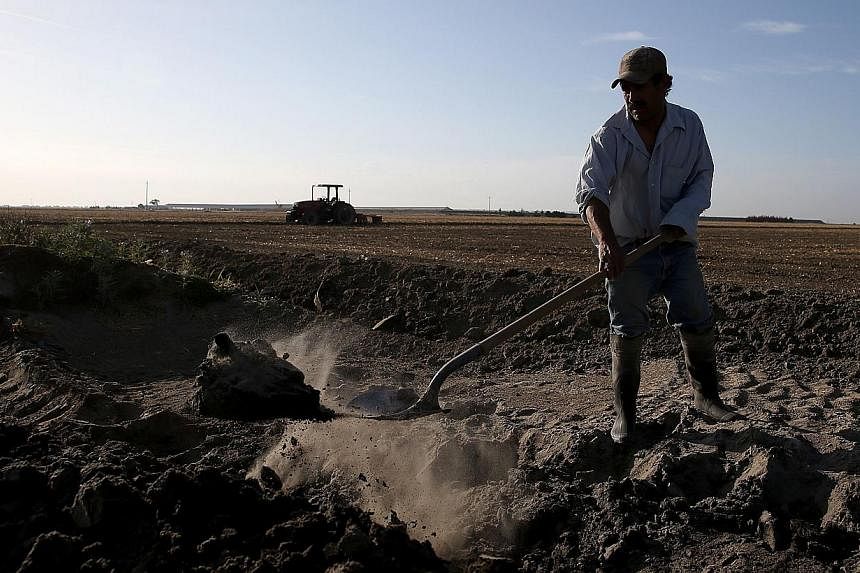SAN FRANCISCO (BLOOMBERG) - California regulators approved rules that for the first time require mandatory water reductions across the state as a historic drought gripping the region enters its fourth year and conservation efforts fall short of targets.
The state's 411 urban water suppliers must cut use by 8 percent to 36 percent, with some of the deepest decreases imposed on wealthy communities that haven't reduced their consumption enough. Those cities that have already cut back the most would face smaller restrictions.
The drought has forced farmers in the nation's top agricultural state to fallow millions of acres while some rural communities are running out of water. The cost to drill wells has tripled because of demand and the below-ground aquifer in some parts of the state has sunk to the lowest level ever. The price of water is on the rise as utilities increase rates to make up for lost revenue.
"We know we're not asking people to do things that are easy," Felicia Marcus, the chair of the California State Water Resources Control Board, said before the board approved the rules on Tuesday.
"It is better to prepare now than to face much more painful cuts should it not rain in the fall."
Governor Jerry Brown, a 77-year-old Democrat, last year called for a 20 percent voluntary reduction. Yet the state hasn't been able to meet that goal. Residents reduced water use by 3.6 percent in March compared to the same month in 2013 and by 8.6 percent since June, when officials began tracking conservation data.
Brown in April issued an executive order calling on the California State Water Resources Control Board to draft restrictions that would cut use across the state by 25 percent.
Water suppliers that don't conserve enough would face a daily penalty of as much as US$500 (S$665), with the fine increasing to as much as US$10,000 if the agency issues a cease-and-desist order.
The rules will take effect on May 15 after they're approved by the Office of Administrative Law. Each water supplier will be required to report data from June through February for comparison with the same period in 2013 to measure reductions.
Some of the state's wealthiest communities, including Beverly Hills, the San Francisco Bay Area town of Hillsborough and the Southern California town of Montecito will face restrictions of as much as 36 percent. Some of the state's poorest communities, including East Palo Alto and Compton, will face restrictions of as much as 8 percent.

